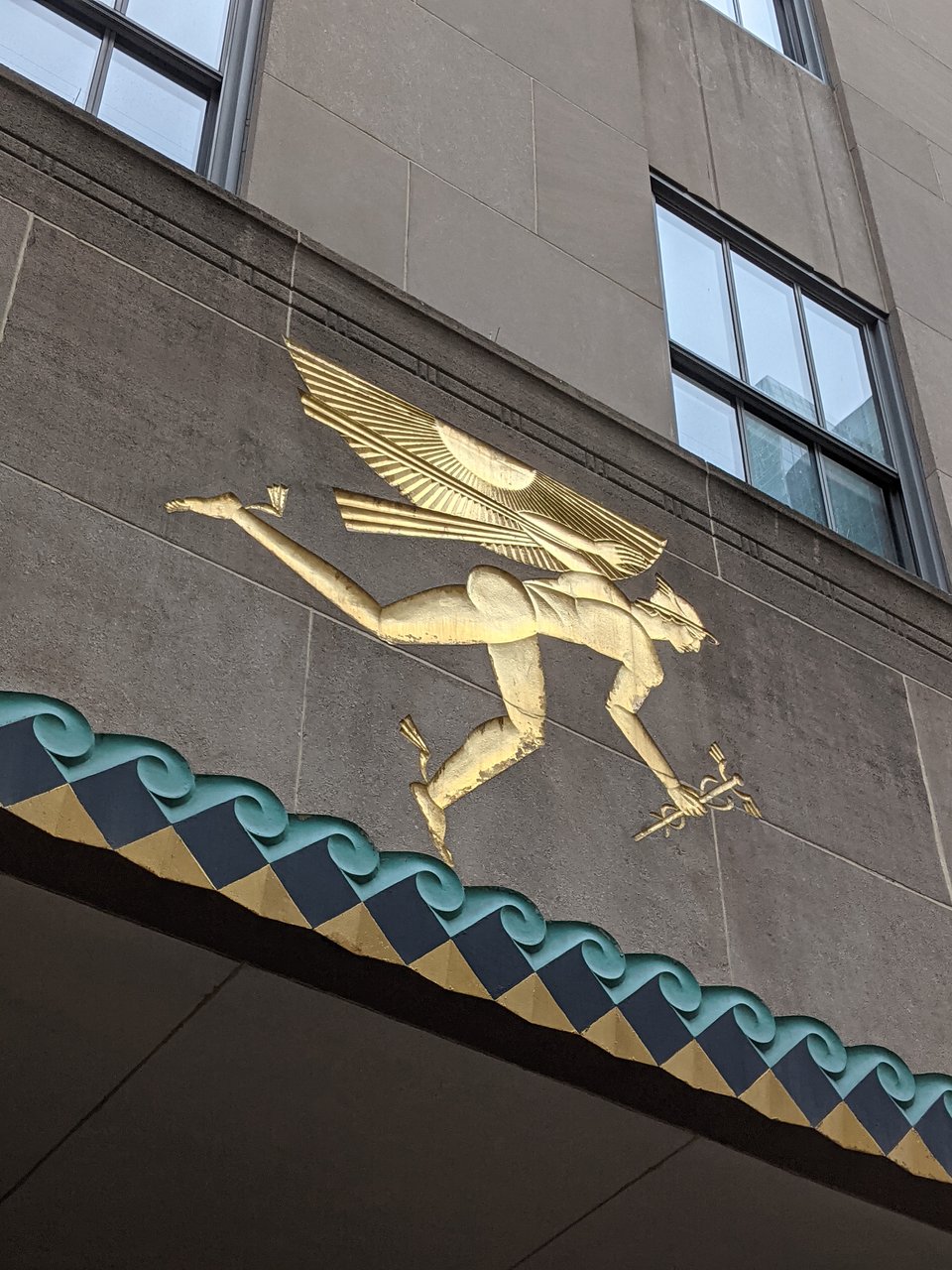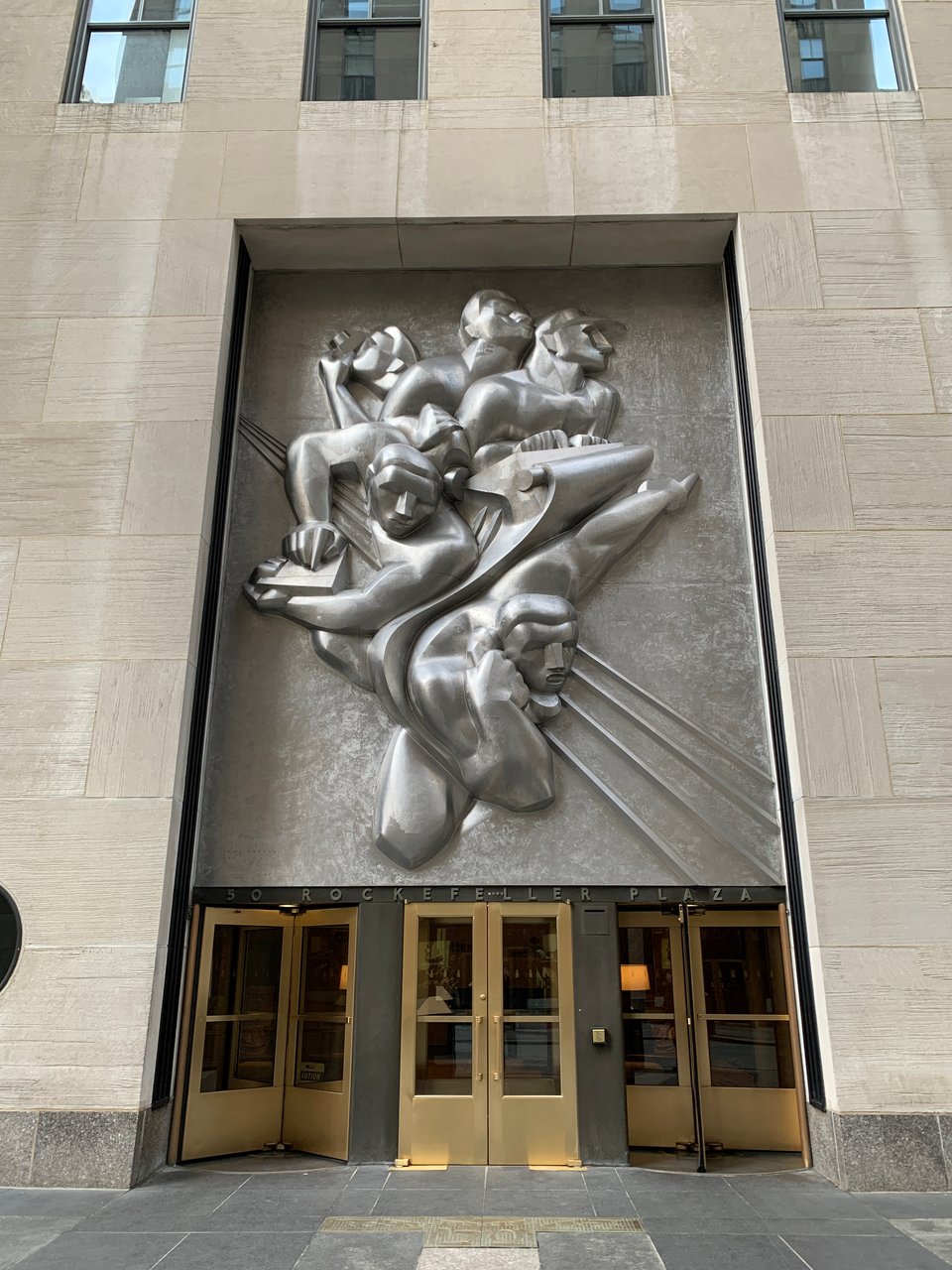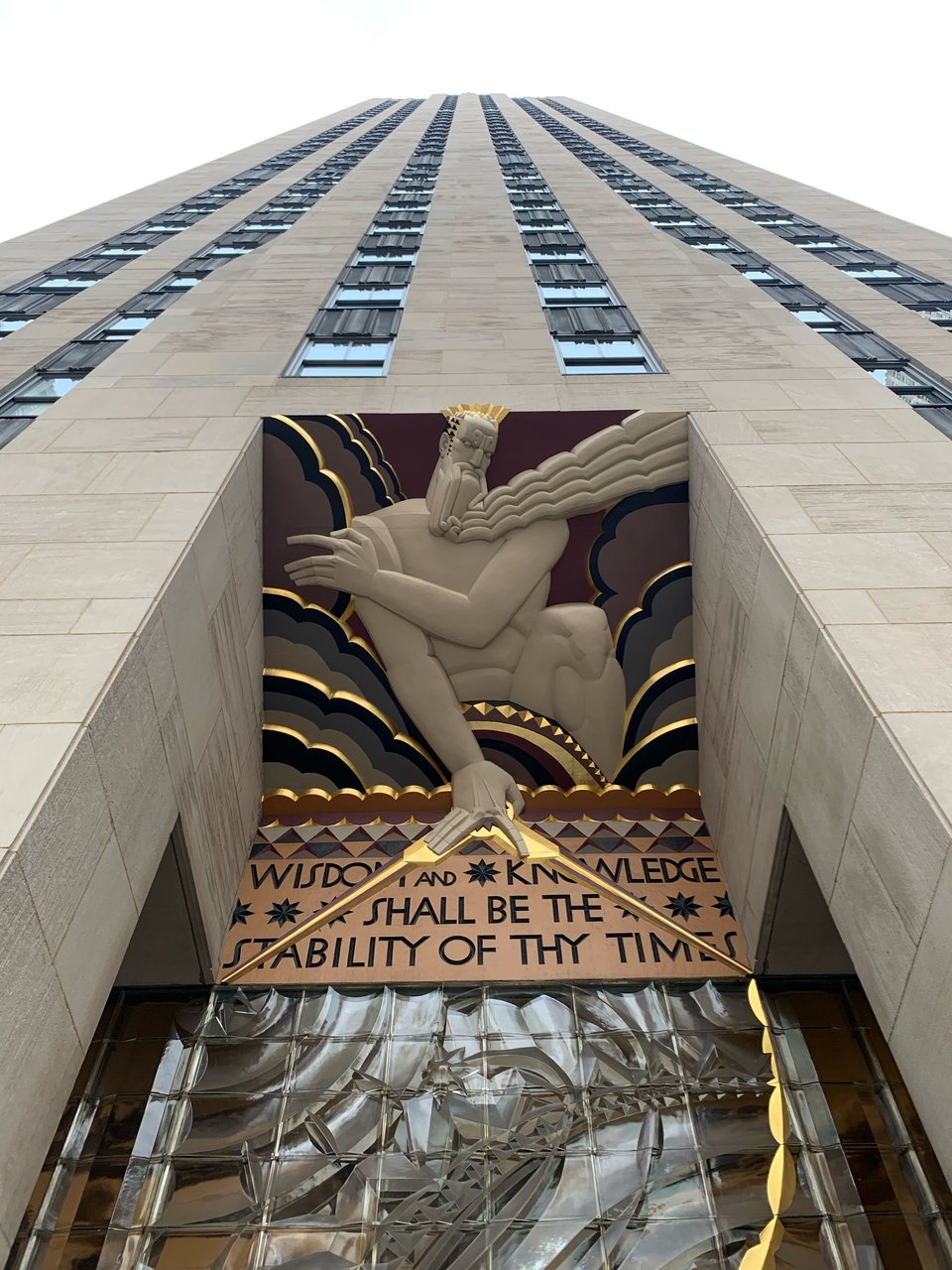Radio City
Hi friends,
(welcome to my email dispatch! You can sign up for these or read the archive at buttondown.email/thesephist 💌)
One of the beautiful privileges of living in a city like New York is that you can just go for a stroll around town and encounter pieces of art that could plausibly belong in museums. My favorite such area of the city is the Rockefeller Plaza.
Imagine yourself as John D. Rockefeller in 1930, one of the most capitalist capitalists to ever have been capitalized. The economy is tumbling into a recession and then a depression, jeopardizing your plan for a new metropolitan opera house — how European of Rockefeller, an American success story! — by throwing the Met Opera's own economics into disarray.
Millions deep into the financing of the project, Rockefeller digs his heels into the ground and pivots the plans for the opera into a home for new, rapidly rising American media industries like radio and broadcast TV — RCA, NBC, Associated Press, and others, many of which are corporate tenants to this day.
Commemorating this shift is the namesake of the reframed megaproject: not an opera house, but "Radio City".
There are so many cultural and historical undertones in even the blurriest retelling of this story that I always struggle to find a place to begin. For one, the narrative poetry of pivoting from a retrospective story of preservation and continuation of the Met Opera to a progressive story about the increasingly intwined fates of technology and media! For another, the marriage of the rewards of unbridled capitalism, the circumstances of economic ruin, a sense of legacy and civic duty, an affinity for the arts and media. The choice to commemorate prominent corners of the plaza with veritable works of art rather than nameless corporate sculptures or fountains.
Woven into all of these stories is the reason I turn to Radio City so often these days — it's emblematic of a strikingly optimistic, progressive, humanist perspective on technology and its collision with culture. A perspective that's increasingly difficult for me to find in modern-day San Francisco.

Radio City's construction, murals, and sculptures commonly draw on the Art Deco period style, which you can identify by a blend of "old civilization" motifs like "2D" geometric character silhouettes, mixed with "jet age" elements like streamlined rays, smooth curves, and contemporary industrial elements like steel and aluminum. The resulting visuals often create the impression that you're walking among ancient temples built in an alternate world where the Egyptians or Babylonians were also flying powered aircraft and transmitting stories over the radio.
This combination of ancient and industrial motifs also means that technology figures prominently in all the artwork, but always in relation to humans. You can see this really clearly in "News" in the Associated Press building by Isamu Noguchi:

A telephone, a typewriter, a camera. But the subject of the sculpture isn't any of these individual products or technologies. It's the employment of these technologies by humans to create new things, to report and distribute stories about the world. The story is a story about technology, but here, technology is fundamentally a human endeavor. It is humans who give technology meaning and direction, and humans' directed use of technology which Radio City celebrates. This humanist perspective on technology is simultaneously irreverent, principled, and agency-asserting.
We find the same humanist-industrial motif throughout the plaza buildings. For example in the mural "American Progress" welcoming visitors to 30 Rockefeller from over the grand lobby, technological and industrial progress figures as a kind of intrinsic good, a virtue to be celebrated in the cathedral that is the monumental skyscraper standing at the heart of New York City.

My favorite work among the complex, though, is a bit more proverbial. A relief of Zeus-like lightning-wielding entity mounted over the entryway of 30 Rock, the work titled "Wisdom" borrows a Biblical passage:
Wisdom and knowledge shall be the stability of thy times.
In the original context, the phrase then continues in an appeal to divine judgment:
... and strength of salvation: the fear of the Lord is his treasure.
The relief at Rockefeller, taking only the first part as its own, shows a Promethean "Wisdom" reclaiming wisdom and knowledge — arguably even technology and progress, in context of the Plaza — as human pursuits. At a time of economic strife, it's a secular prayer to human capacity for reason, knowledge, and technology to lift society out of its struggles.
Once again, technology does not march along by itself, leaving lowly humans to be merely dragged along as it reshapes society generation over generation. Technology writ large is a tool for humans to wield in pursuit of flourishing and prosperity. It is not technology that subjugates Wisdom, but rather Wisdom himself that dominates over the plaza, wielding knowledge and technology as his instruments of agency.
I yearn to see this more irreverent and humanist relationship to technology imagined more often today, when both technology and the industry backing its progress feel increasingly detached from culture and media and the humanities. I dream of a humanist revival with computing systems at the center, grasped firmly in the hands of Wisdom.
A modern Radio City.
What I read
Vibecore: the economics of authenticity
A reminder: you can reply to these emails :-) They go straight to my inbox.
Wishing you a happy and healthy week ahead,
— Linus